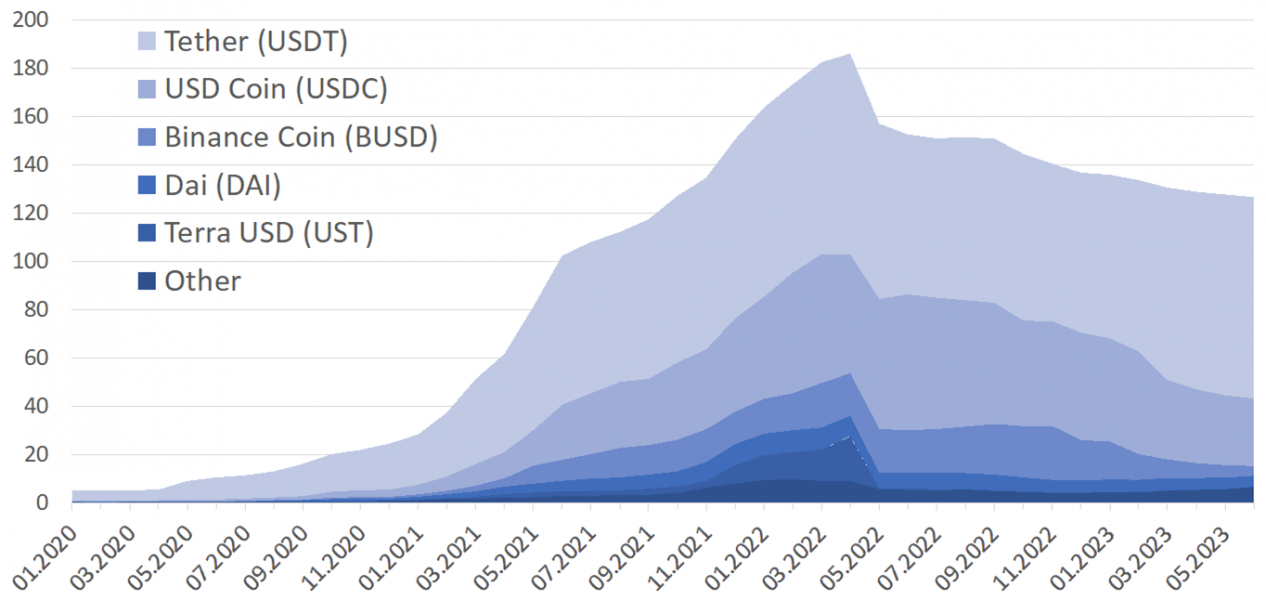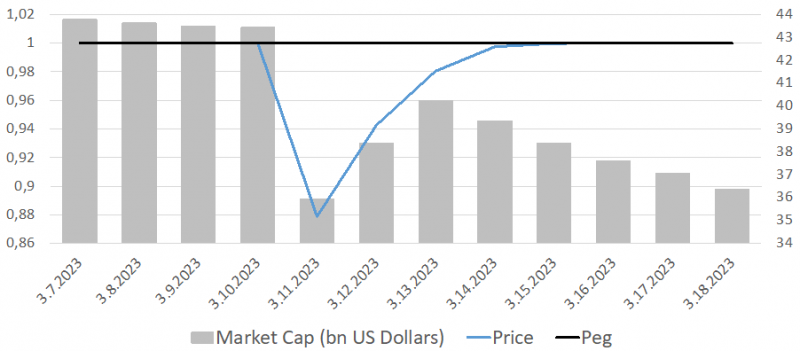References
Arner, Douglas W., Raphael Auer, and Jon Frost, “Stablecoins: Risks, Potential and Regulation,” BIS Working Papers No. 905, 2020.
Barthelemy, Jean, Paul Gardin, and Benoît Nguyen, “Stablecoins and the Financing of the Real Economy,” Banque de France Working Paper No. 908, 2023.
Bertsch, Christoph, “Stablecoins: Adoption and Fragility,” Sveriges Riksbank Working Paper Series No. 423, 2023.
Brainard, Lael, “Digital Currencies, Stablecoins, and the Evolving Payments Landscape,” Speech by Lael Brainard, Member Board of Governors of the Federal Reserve System, at the conference on “Digital Currencies, Stablecoins, and the Evolving Payments Landscape”, October 2019.
Cœuré, Benoît, “Digital Challenges to the International Monetary and Financial System,” Panel remarks by Benoît Cœuré, Member of the Executive Board of the ECB, at the Banque centrale du Luxembourg-Toulouse School of Economics conference on “The Future of the International Monetary System”, September 2019.
FSB, “Regulatory Issues of Stablecoins,” Financial Stability Board, October 2019.
FSB, “Assessment of Risks to Financial Stability from Crypto-assets,” Financial Stability Board, February 2022.
G7, “Investigating the Impact of Global Stablecoins,” G7 Working Group on Stablecoins, October 2019.
Kim, Sang Rae, “How the Cryptocurrency Market is Connected to the Financial Market,” Mimeo, 2022.
Landau, Jean-Pierre and Markus K. Brunnermeier, “The Digital Euro: Policy Implications and Perspectives,” Report prepared for the European Parliament at the Request of the Committee on Economic and Monetary Affairs, January 2022.
Liu, Jiageng, Igor Makarov, and Antoinette Schoar, “Anatomy of a Run: The Terra Luna Crash,” NBER Working Paper 31160, 2023.
Morris, Stephen and Hyun Song Shin, “Unique Equilibrium in a Model of Self-Fulfilling Currency Attacks,” The American Economic Review, Volume 88 (3), 1998.





